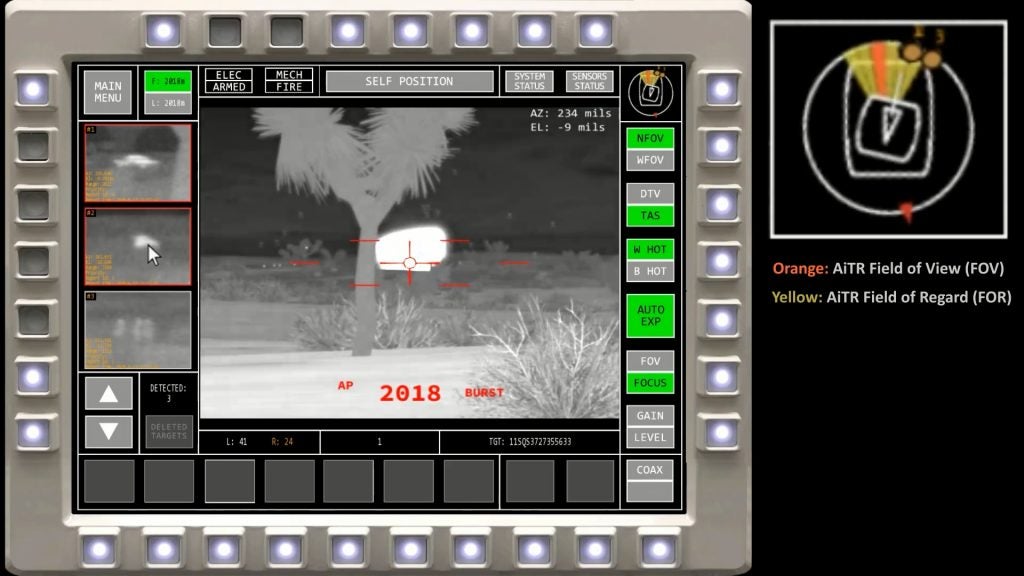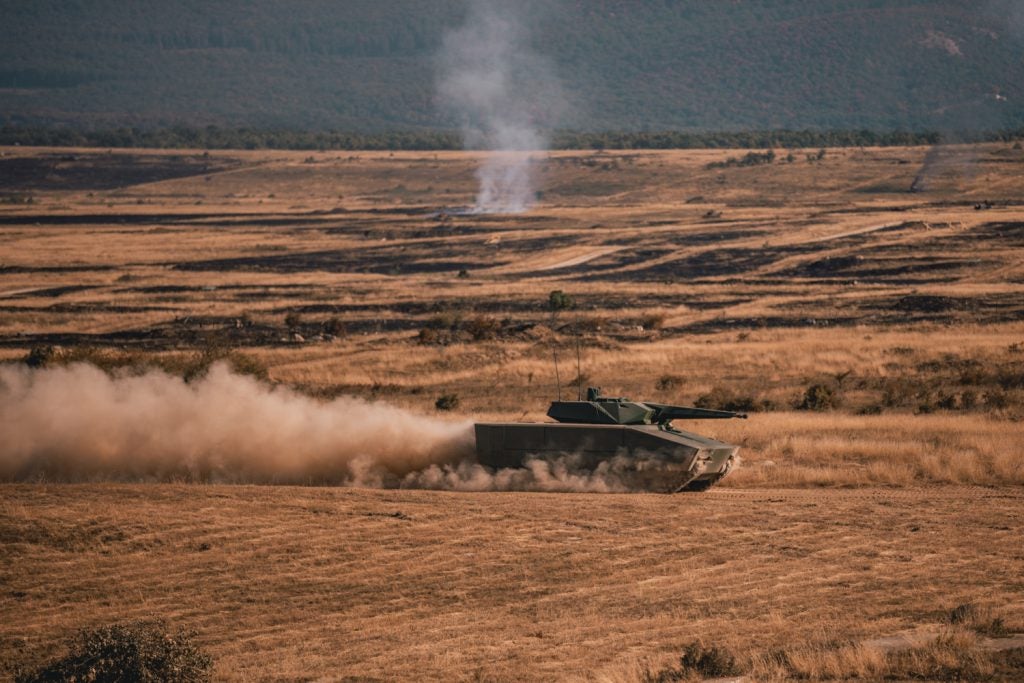Raytheon Debuts OMFV Lynx Artificial Intelligence And Digital Design Concepts
Raytheon, one of the members of American Rheinmetall Vehicles’ Team Lynx, has unveiled its concept for the integration of artificial intelligence and digital design into the team’s contender for the Bradley replacement program.
The concept involves an AI-assisted crew of two operating the Lynx, with the AI described as the “third crew member”, compared to the Bradley’s crew of a driver, gunner and commander. When the AI detects a threat, the AI will classify it and assign it a priority, while the human crew members will decide whether to and how to engage the threat.
According to Raytheon, automation of target identification in this manner will reduce the cognitive load of the human crew members, as well as the number of simultaneous demands they are subject to. The company compares the model to that of a “sophisticated semi-autonomous car”, with computers and algorithms “performing lots of analysis”, but ultimately the human crew members are the ones making the final decision as with the semi-autonomous car.
“Artificial intelligence is a big leap forward with any fighting vehicle,” said Brad Barnard, director of OMFV at Raytheon Missiles & Defense. “Not only will AI assume a role, it will increase situational awareness and survivability.”

AI targeting systems are already being experimented with by the US Army, which has been developing ATLAS, the Advanced Targeting Lethality & Lethality Aided System for over two years now. The medium-calibre implementation of ATLAS being tested by the Army uses a 50mm autocannon in an unmanned turret, mounted on a General Dynamics Griffin chassis, of which its Griffin III derivative had the dubious honor of being the winner-by-default of OMFV prior to the program’s reboot. The Griffin III similarly aims to use automation to reduce crew count to two members.
Raytheon also revealed its digital engineering plan for the Lynx, with detailed computer models of the vehicle being built to ensure that new capabilities will be compatible with the vehicle. These models will facilitate the connection of multiple points of model data into one database, a “single source of truth”, that will allow the virtual installation of technologies like aided target recognition to iterate and evaluate impacts on the overall system. It is hoped that this will reduce integration efforts and risk prior to the production of physical prototypes or hardware installation.
“We will virtually build, analyze and refine the Lynx design as we progress,” said Wes Kremer, president of Raytheon Missiles & Defense. “And we’ll ensure digital technology enablers, like AI-enabled aided target recognition, provide soldiers every advantage on the battlefield.”
The company also says that AI-aided target recognition is only the starting point for OMFV Lynx automation. More AI programs will be implemented to “spread the workload” of the human crew, with assessments to be carried out to evaluate the effectiveness of AI at assuming a portion of the tasks usually carried out by a human crew member.

